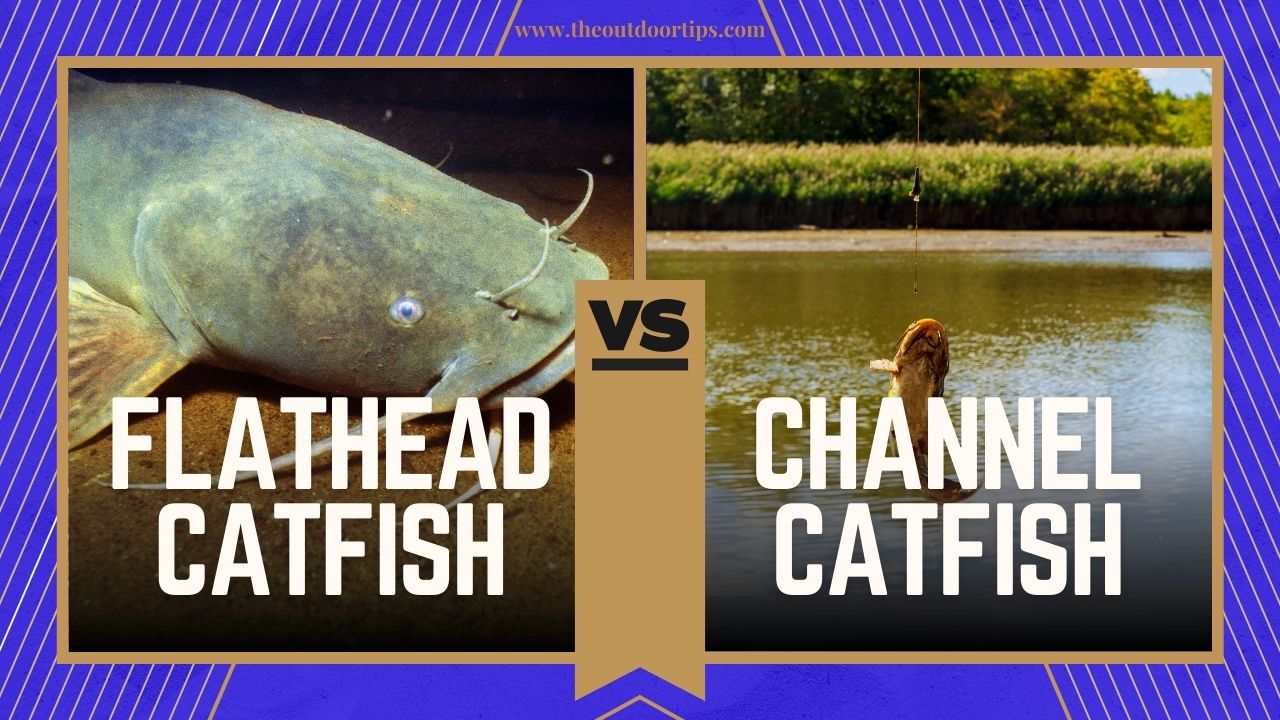Freshwater angling enthusiasts are captivated by the enigmatic allure of catfish, those whiskered giants that prowl beneath the water’s surface. Among the various catfish species, the channel catfish and flathead catfish emerge as charismatic representatives, each possessing unique characteristics that entice anglers. In this in-depth article, we embark on a journey to explore the intricacies of these two species, dissecting their physical attributes, favored habitats, behaviors, and the exhilarating angling experiences they offer.

Channel Catfish: Characteristics and Identification
The channel catfish (Ictalurus punctatus) is an embodiment of sleek elegance, characterized by its elongated body and distinctive forked tail. This tail is a hallmark feature that distinguishes it from other catfish species. Sporting a color palette that transitions from dark gray to olive-brown on its upper side and lightening on the underbelly, the channel catfish’s body is adorned with a series of dark spots. Anglers must exercise caution while handling this species due to the presence of sharp spines in its pectoral and dorsal fins.
Flathead Catfish: Characteristics and Identification
In stark contrast, the flathead catfish (Pylodictis olivaris) boasts a more robust and pronounced head, setting it apart with a distinctive appearance. This characteristic head shape contributes to its unique profile. Clad in an olive-brown to yellowish hue, the flathead catfish stands out against its aquatic backdrop. Furthermore, flathead catfish sport a rounded tail, a departure from the forked tail design found in their channel catfish counterparts.
Preferred Habitats and Distribution
Channel catfish are celebrated for their remarkable adaptability to a diverse range of aquatic habitats. They inhabit slow-moving rivers, tranquil lakes, expansive reservoirs, and even smaller ponds. This versatility is reflected in their distribution, which spans across the expansive landscape of North America. Their affinity for areas with moderate currents and ample submerged structures, such as fallen trees and rocky formations, positions them as adept hunters and survivors.
Conversely, the flathead catfish display a strong affinity for larger rivers and the deeper domains of aquatic ecosystems. Their strategic preference for submerged structures, such as rocks and logs, is indicative of their ambush hunting tactics. While native to the central and eastern United States, the flathead catfish has expanded its range through intentional introductions to various regions, making them a dynamic presence beyond their original habitat.
Behavior and Feeding Habits
Channel catfish are celebrated for their adaptability not only in habitat but also in their feeding habits. They are quintessential omnivores, displaying a flexible palate that embraces aquatic insects, crustaceans, and small fish. Yet it is their highly developed sense of smell that truly defines their hunting strategy. This keen olfactory ability allows them to detect potential prey from considerable distances, which plays a pivotal role in their success as predators.
In contrast, the flathead catfish exhibit a more specialized approach to sustenance. Their carnivorous tendencies lean heavily toward live prey, such as fish and crustaceans. Operating as ambush predators, they rely on stealth and patience to secure their meals. To achieve this, they seek out areas with abundant cover, lurking in the shadows until unsuspecting prey ventures within striking range.
Angling Appeal and Culinary Qualities
The channel catfish presents anglers with an accessible and dynamic angling experience. Their versatility in accepting a variety of baits, coupled with their spirited resistance once hooked, make them a prime target for anglers of all skill levels. Channel catfish are renowned for their energetic fights, engaging anglers in memorable battles. Adding to their allure, their meat boasts exceptional culinary qualities, revered for its flavor and versatility in various cooking methods.
Conversely, the pursuit of the flathead catfish offers an entirely different level of angling challenge. Hooking a powerful flathead catfish requires strategic bait placement, often involving live prey. Engaging in a battle of strength and wits with these predators is a test of an angler’s skill, patience, and adaptability. Beyond the thrill of the fight, the culinary value of flathead catfish meat provides an added incentive, appealing to those who savor its unique taste and texture.
Identification Comparison
Channel Catfish
- Coloration: Dark gray to olive-brown with spots
- Tail Shape: Forked
- Head Shape: Elongated body
Flathead Catfish
- Coloration: Olive-brown to yellowish
- Tail Shape: Rounded
- Head Shape: Broader and flatter head
Preferred Habitats and Distribution Comparison
Channel Catfish
- Preferred Habitats: Slow-moving rivers, lakes, reservoirs, ponds
- Distribution: North America
- Adaptability: Flourishes in various aquatic environments
Flathead Catfish
- Preferred Habitats: Large rivers, deeper waters, submerged structures
- Distribution: Central and eastern United States, introduced in various regions
- Adaptability: Strongly associated with specific aquatic habitats
Feeding Habits Comparison
Channel Catfish
- Feeding Behavior: Omnivorous, versatile diet
- Diet: Insects, crustaceans, small fish
Flathead Catfish
- Feeding Behavior: Carnivorous, ambush predator
- Diet: Fish, crustaceans, live prey
Channel Catfish vs. Flathead Catfish
| Aspect | Channel Catfish | Flathead Catfish |
|---|---|---|
| Identification | Dark gray to olive-brown, forked tail | Olive-brown to yellowish, rounded tail |
| Preferred Habitats | Rivers, lakes, reservoirs, ponds | Large rivers, deeper waters, structures |
| Feeding Behavior | Omnivorous, versatile diet | Carnivorous, ambush predator |
| Angling Appeal | Energetic fights, versatile angling | Strategic approach, powerful battles |
| Culinary Qualities | Prized taste and texture | Distinctive taste and culinary value |
Final Thoughts
The rivalry between the channel catfish and flathead catfish enriches the world of freshwater angling with diversity and excitement. Channel catfish provide an accessible, engaging angling experience for enthusiasts of all skill levels, captivating with their energetic fights and culinary rewards. In contrast, the pursuit of flathead catfish demands a deeper engagement, appealing to those who relish the challenge of strategic angling and the rewards of unique taste and texture.
